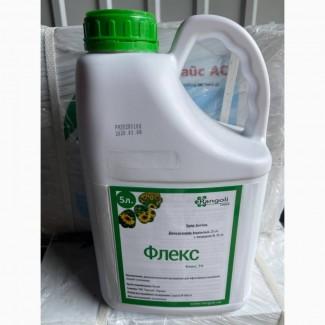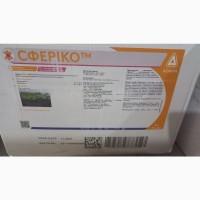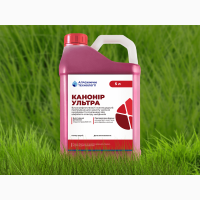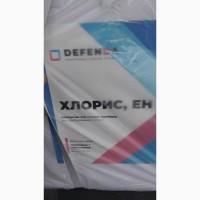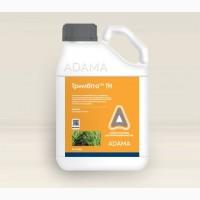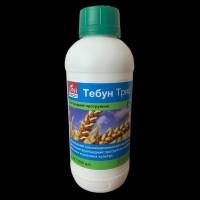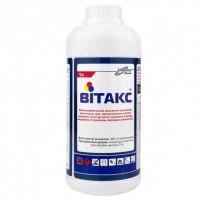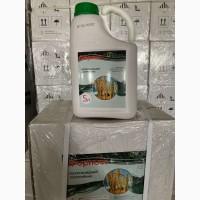Sell / buy
Flex - System-contact two-component seed poison against a complex of diseases, Kiev region.
Price15.5$
Region:all of Ukraine,
Kiev region.
(Vyshhorodok)
Updated:
Flex - Systemic contact two-component preparation intended for poisoning the seeds of corn, peas,sunflower, soybean, sorghum, rapeseed, sugar beet.
Active substances: fludioxonil, 25 g/l + metalaxyl - M, 10 g/l
Pharmaceutical form: suspension concentrate
Purpose: contact and system.
Manufacturer: Rangoli
Packaging: 5l canister, the price is for 1l, 153
Переваги:
Flex, 3.5% d.c.s. protects plants from pathogens of fungal diseases that are localized both on the surface and inside the seeds.
the long-term effect of the fungicidal effect allows you to effectively control the development of leaf diseases at the beginning of plant growth and development, which allows you to reduce the number of treatments of plants with fungicides, or completely eliminate them (on spring crops)
when processing seeds, it is possible to use a poison in combination with other preparations of insecticidal and stimulating action, which have a reaction of the environment close to neutral.
low consumption rate, the best choice in terms of "price-quality ratio"
does not affect the germination of seeds, thanks to which it is possible to fertilize early
the period of protective action is up to 12 weeks.
Mechanism of action:
Flex, 3.5% d.c.s. systemic (metalaxyl-m) and contact (fludioxonil) fungicide. Destroys the infection, both in the middle (endogenous) and on the surface (exogenous) of the seed.
Fludioxonil penetrates locally into the tissues of the seeds, but does not move much in the seedlings.
It is safe for seeds and seedlings. It does not have a negative effect on the germination and development of crops, even if the rate of consumption is exceeded.
Metalaxyl disrupts nucleic acid biosynthesis in fungi and inhibits RNA synthesis.
The rate of consumption of working fluid: 10 liters of working solution per 1 ton of seeds.
Regulations of application:
The drug is used once by spraying the seeds with a suspension.
Flex, 3.5% d.c.s. protects against pathogens belonging to the class of Ascomycetes, Basidiomycetes, and Oomycetes.
=Corn
Pests
seed mold (Aspergillus Nichd, Pythium Prungsh)
root rot, stem rot (Fusarium spp.)
flying slag (Sorosporium reilianum)
Consumption rate - 1.0 l/t
= Sunflower(//tractor-service.com)
fusarium root rot (Fusarium spp.)
seed mold (Aspergillus Nichd, Pythium Prungsh)
downy mildew (Plasmopara heliaanthi)
white rot (Whetzelinia sclerotiorum)
Consumption rate - 6.0 l/t
= Peas
seed mold (Aspergillus Nichd, Pythium Prungsh)
fusarium root rot (Fusarium spp.)
downy mildew (Peronospora pisi)
Ascochyta (Ascochyta pisi)
Consumption rate - 1.0 l/t
= Soy
seed mold (Aspergillus Nichd, Pythium Prungsh)
fusarium root rot (Fusarium spp.)
downy mildew (Peronospora manshurica)
Ascochyta (Ascochyta sojaecola)
anthracnose (Colletotrichum spp.)
Consumption rate - 1.0 l/t
= Rapak
downy mildew (Peronospora brassicae)
fusarium root rot (Fusarium spp.)
seed mold (Aspergillus Nichd, Pythium Prungsh)
Alternaria (Alternaria brassicae)
black leg (Pythium, Rhizoctonia, Olpidium)
Consumption rate - 5.0 l/t
= Sorghum
Consumption rate - 5.0 l/t
= Sugar beets
The consumption rate is 9 ml per sowing unit.
Features of application:
The seed material must be undamaged, free of impurities and dust. Treat seeds with a moisture content of no more than 16%. It is not recommended to treat seeds that have already been treated with other preparations.
The biological quality of the drug is not affected by weather conditions, sowing dates and other technological measures during cultivation.
Etching is carried out in advance on special machines designed for this purpose. If it is necessary to use with other drugs (insecticides), it is necessary to carry out preliminary mixing.
Active substances: fludioxonil, 25 g/l + metalaxyl - M, 10 g/l
Pharmaceutical form: suspension concentrate
Purpose: contact and system.
Manufacturer: Rangoli
Packaging: 5l canister, the price is for 1l, 153
Переваги:
Flex, 3.5% d.c.s. protects plants from pathogens of fungal diseases that are localized both on the surface and inside the seeds.
the long-term effect of the fungicidal effect allows you to effectively control the development of leaf diseases at the beginning of plant growth and development, which allows you to reduce the number of treatments of plants with fungicides, or completely eliminate them (on spring crops)
when processing seeds, it is possible to use a poison in combination with other preparations of insecticidal and stimulating action, which have a reaction of the environment close to neutral.
low consumption rate, the best choice in terms of "price-quality ratio"
does not affect the germination of seeds, thanks to which it is possible to fertilize early
the period of protective action is up to 12 weeks.
Mechanism of action:
Flex, 3.5% d.c.s. systemic (metalaxyl-m) and contact (fludioxonil) fungicide. Destroys the infection, both in the middle (endogenous) and on the surface (exogenous) of the seed.
Fludioxonil penetrates locally into the tissues of the seeds, but does not move much in the seedlings.
It is safe for seeds and seedlings. It does not have a negative effect on the germination and development of crops, even if the rate of consumption is exceeded.
Metalaxyl disrupts nucleic acid biosynthesis in fungi and inhibits RNA synthesis.
The rate of consumption of working fluid: 10 liters of working solution per 1 ton of seeds.
Regulations of application:
The drug is used once by spraying the seeds with a suspension.
Flex, 3.5% d.c.s. protects against pathogens belonging to the class of Ascomycetes, Basidiomycetes, and Oomycetes.
=Corn
Pests
seed mold (Aspergillus Nichd, Pythium Prungsh)
root rot, stem rot (Fusarium spp.)
flying slag (Sorosporium reilianum)
Consumption rate - 1.0 l/t
= Sunflower(//tractor-service.com)
fusarium root rot (Fusarium spp.)
seed mold (Aspergillus Nichd, Pythium Prungsh)
downy mildew (Plasmopara heliaanthi)
white rot (Whetzelinia sclerotiorum)
Consumption rate - 6.0 l/t
= Peas
seed mold (Aspergillus Nichd, Pythium Prungsh)
fusarium root rot (Fusarium spp.)
downy mildew (Peronospora pisi)
Ascochyta (Ascochyta pisi)
Consumption rate - 1.0 l/t
= Soy
seed mold (Aspergillus Nichd, Pythium Prungsh)
fusarium root rot (Fusarium spp.)
downy mildew (Peronospora manshurica)
Ascochyta (Ascochyta sojaecola)
anthracnose (Colletotrichum spp.)
Consumption rate - 1.0 l/t
= Rapak
downy mildew (Peronospora brassicae)
fusarium root rot (Fusarium spp.)
seed mold (Aspergillus Nichd, Pythium Prungsh)
Alternaria (Alternaria brassicae)
black leg (Pythium, Rhizoctonia, Olpidium)
Consumption rate - 5.0 l/t
= Sorghum
Consumption rate - 5.0 l/t
= Sugar beets
The consumption rate is 9 ml per sowing unit.
Features of application:
The seed material must be undamaged, free of impurities and dust. Treat seeds with a moisture content of no more than 16%. It is not recommended to treat seeds that have already been treated with other preparations.
The biological quality of the drug is not affected by weather conditions, sowing dates and other technological measures during cultivation.
Etching is carried out in advance on special machines designed for this purpose. If it is necessary to use with other drugs (insecticides), it is necessary to carry out preliminary mixing.
|
Shop, contacts | |
Yuriy / отзывы, инфо. / оценка activities | |
|
Telephone:
+38(xxxxxx
показать
| |
All user ads ~1000 | |
Ad ID: #1128006
(added by a registered user, date registration: 10-08-2016)
Added / Updated: 21-10-2025 09:22 (relevant, until: 10-21-2026)
Permanent ad address:
Showed / watched for today: ?, total: ?
Similar ads
Among them there are many interesting ones...
